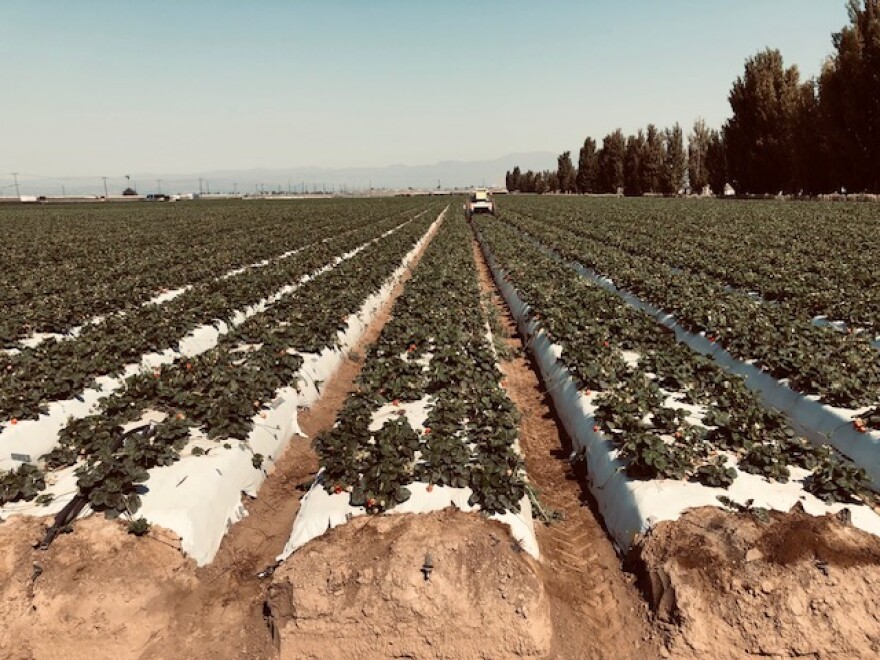A tractor is moving through a strawberry field just outside of Oxnard. Nothing seems unusual, until you take a closer look at the tractor.
There’s no driver. In fact, there isn’t even a spot for the driver.
It’s a prototype of a one of a kind tractor known as a bug zapper, designed to get rid of some destructive insect pests without using pesticides.
"This is a bug vacuum, designed by a company called Agrobot, based in Spain. The best description I can give to people is that it's my field Roomba," said Matt Conroy, who is District Manager for GoodFarms.
There are manned versions of the technology, but they aren't considered to be nearly as efficient.
"It drives around my field, and it sucks up the bad pests we have here, that will harm the strawberries. It sucks them up, and out of the top, I get free fertilizer. It's a vaccum that is mobile."
He said the bug zapper is designed to suck up a specific type of small, oval shaped insects which can feed on more than 380 species of plants. They puncture the surface of plants, inject digestive enzymes, and feed on the juices.
"It's called a Lygus. They are very common in Ventura County, and they're in all sorts of different products," said Conroy.
How good is the vacuum tractor in dealing with the insects? "It's the best we have," said Conroy. "It's not perfect, but it definitely does it better than anything else out there on the market."
Conroy said GoodFarms worked with Agrobot to develop a solar power harvesting machine for its strawberry fields. The machine moves slowly through the fields, so workers can offload crates of strawberries from the field without having to walk hundreds of feet.
Some farms use gas powered versions of the machines, but the solar powered versions don’t create pollution, and because they don’t need gas, are cheaper to operate.
The Ventura County Air Pollution Control District gave GoodFarms grant money to aid in the development, and purchase of some of the cutting edge machines.
The Spanish company’s Juan Bravo spearheaded that project, as well as the bug zapper. GoodFarms has the only four bug zappers made, which were tested in its fields.
"GoodFarms was telling me that they were having a hard time finding people to operate the tractors for this kind of job," said Bravo. "It's very loud, very dusty, and very boring. So, we came with the idea of automating the process, and making it more efficient. The robot controls the height of the fans so they can operate at maximum efficiency, versus a human operator."
While the company was testing the bug zappers on the Oxnard farm, they’ve been tweaked, and are now being marketed internationally.

The bug zapping tractor is autonomous, so it can run up and down the aisles of a field. At the same time, it has safety systems to prevent it from wandering off. There are onboard sensors which will stop it if it approaches people, or obstacles.
It operates at a slow speed, moving at two miles an hour while working. The zapper has a side by side, double fan vacuum system to suck up and destroy the pests.
The bug vacuum can be controlled with a remote, or an app on a cell phone.
Conroy believes the robotic bug zappers are going to be a hit in the agricultural industry. He said they are more efficient, and provide a good way to get rid of a destructive insect pest in a much more environmentally friendly way than using pesticides.



